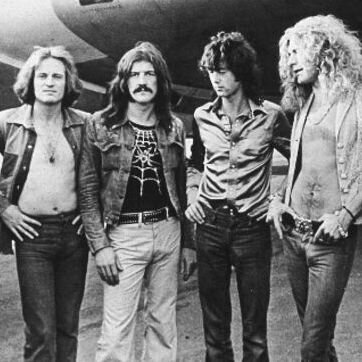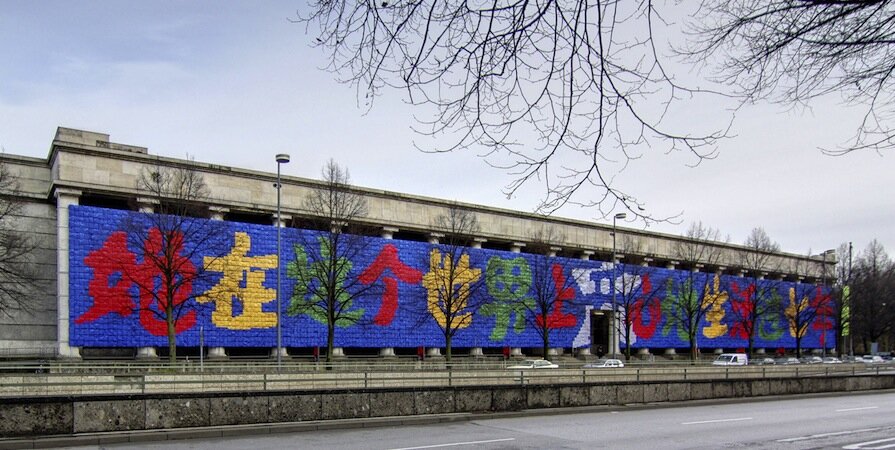
Apartheid, Led Zeppelin, Earthquakes, and Moby Dick: Creations Birthed from Crisis
Times of crisis are a huge challenge to all of us. Often breeding personal disaster on top of external disaster.
It is in these hard times that we must let our experiences be the birthing place for new creations. Some of the greatest works have stemmed from times of crisis.
Here are some great pieces of music, film, literature and art that have been created, inspired by crises.
Apartheid, Led Zeppelin, Earthquakes,
and Moby Dick:
Creations Birthed from Crisis
Times of crisis are a huge challenge to all of us. Often breeding personal disaster on top of external disaster.
It is in these hard times that we must let our experiences be the birthing place for new creations. Some of the greatest works have stemmed from times of crisis.
Here are some great pieces of music, film, literature and art that have been created, inspired by crises.
‘When the Levee Breaks’ by Led Zeppelin
Memphis Minnie (left) one of the original writers/performers of
‘When the Levee Breaks’, later covered by Led Zeppelin (right).
‘When the Levee Breaks’ was originally written and sang by Memphis Minnie and Kansas Joe McCoy in 1929. The song was written about the Great Mississippi Flood of 1927, the most destructive river flood in the history of the United States. The disaster destroyed around 130,000 homes and farms, displacing over 700,000 people.
Residents of the area built sandbag walls along the river to stop the flood—known as levees— and some were forced to take shelter on top of them, however, the worsening conditions prompted them to lament about their unstable future, which is where the tune draws its interpretation from. Those who endured the worst were African Americans in the community, who were often forced at gunpoint to build the levees by the white people who operated the refugee camps while suffering systematic poor treatment from the Red Cross. As a result, the lyrics of this song express the horrendous experiences of the oppressed during disaster.
Writing credit to Grassroots Journal.
Moby Dick by Herman Melville
In July of 1852 Herman Melville took a steamer to Nantucket for their first visit to the Massachusetts island, home port of their novel’s mythic protagonist, Captain Ahab, and their ship, the Pequod.
On their last day on Nantucket, Melville met the broken-down 60-year-old who had captained the Essex, the ship that had been attacked and sunk by a sperm whale in an 1820 incident. This person became the inspiration behind Melville’s novel.
Captain George Pollard Jr. was just 29 years old when the Essex went down. They survived and returned to Nantucket to captain a second whaling ship, Two Brothers. But when that ship wrecked on a coral reef two years later, the captain was marked as unlucky at sea and no owner would trust a ship to him again.
Pollard lived out his remaining years on land, isolated and ostracised, as the village night watchman.
Writing credit to Gilbert King.
Neil Blomkamp’s film ‘District 9’
District 9 is a 2009 science fiction action film inspired by events in Cape Town’s District Six, during the apartheid era.
The film is partially presented in a found footage format by featuring fictional interviews, news footage, and video from surveillance cameras. The story explores themes of humanity, xenophobia and social segregation.
Beginning in an alternative 1982, an alien spaceship appears over Johannesburg, South Africa, and a population of sick and malnourished insectoid aliens are found aboard the ship. The South African government confines them to an internment camp called District 9. Years later, during the government's relocation of the aliens to another camp, one of the confined aliens named Christopher Johnson tries to escape with his son and return home, crossing paths with a bureaucrat named Wikus van der Merwe.
The treatment of the insectoids, and protagonists, throughout the film brings to life the cruelty of xenophobia and social segregation from a first hand perspective. Exploring the effects, from the ground, on real people in mass crisis events.
Writing credit to Wiki.
‘Remembering’ by Ai Weiwei
In 2009, the dissident artist Ai Weiwei created work to honour the thousands of children who died in the Sichuan earthquake.
More than 80,000 lives disappeared, many of the dead were young people at school and university.
The Chinese government censored and controlled all of the information about the earthquake, so people didn’t know the details of what really happened. So Weiwei decided to cover the Haus der Kunst museum’s facade with one sentence from a victim’s mother. She had written to me: “All I want is to let the world remember she had been living happily for seven years.” This beautiful little girl was just the same as any other: she liked to dance, to sing. But suddenly – because of the negligence of the government, the corruption in construction – there wasn’t a safe building for her to go to school in.
The project, ‘Remembering’, angered China’s rulers – and changed his career for ever.
The Haus der Kunst is a historical building. The architects made it especially for Hitler. They all knew he loved art but had never been accepted as an artist. He criticised any work he considered “degenerate” – any abstraction or early examples of surrealism. So to cover that museum’s facade was a very political act, a very dramatic act. It took 9,000 student backpacks to construct that sentence.
Of course, there is a front door to the museum, so people had to pass right through this sentence. They didn’t understand the Chinese writing, so it forced them to find out, to learn, to read about the show. Munich is a city full of art lovers and collectors and it became very popular.
Writing credit to Ai Weiwei.
Share with us
During this crisis, what are you inspired to create?
What great works, created from crises, have influenced you?
DAN BARANOWSKI ON ICELAND, ART AND ZEN
We caught up with Daniel Baranowski and talked ‘Snap Frozen & Still’; his solo exhibition in the Blue Mountains. Influenced by his trip to Iceland, and the landscape their, Dan talks more about his inspiration and practice.
Nauti Sailor Daniel Baranowski recently opened a show in the Blue Mountains, filled with works inspired by landscape. We caught up with him to get the down low on his inspiration, process and passions.
Daniel Baranovski, painter and photographer, working on his works for ‘Snap Frozen & Still’ in his studio at Nauti Studios, Blue Mountains.
What’s it like to live in the Blue Mountains where there are a lot of artists and creative people?
I was born here, went to school here, in Springwood. The mountains attract a lot of people which is really cool. If you’re born and bred here stuff just filters in. But, it’s a bit of a challenge to not do a bit of a pastiche – it doesn’t float my boat.
How long have you been an artist?
That’s a really good question. Since my exhibition! Hahaha.
“I want to be successful, not famous.”
Okay, what about this? How long have you been ‘artistic’?
Well, that’s been an always thing for me. I’ve always been creative in that sense. Always. Always.
Tell me about your first exhibition, ‘Snap Frozen & Still’ that’s coming up.
This is the first time I’ve painted since high school. There will be paintings, ink drawings and pastel drawings. I have what I call my ‘Socratic sense of humour’ which is why I called the exhibition what I did. It’s largely inspired by a two week trip to Iceland where I took photos because essentially you can fall over there and still take a good photo. I also brought a tiny sketch book and did some 15 minute rapid fire drawings outside in the freezing cold trying to hold a pencil with a big glove on. I do and I teach Tai Chi, and am in to the whole Zen side of things in terms of immediate response to an experience, that is, the Zen idea of capturing a fleeting moment. Also, when I was there the colours were very minimal and that is reflected in my work.
I tried to stalk you on social media but you are hard to find. Why’s that?
Oh good. My plan is working. Haha. I agree with the singer Sia who famously said something like “I want to be successful, not famous.” And, I think that fame is the byproduct of talent.
“Yes, there is a lot of movement…
but it’s still a still!”
How did you find out about Nauti Studios?
I think I saw a post randomly pop up at around the same time a friend also mentioned it. I’ve been here around 18 months or so sharing a studio with another artist who is a friend of mine. I like it here because I can do certain stuff at home but it is still limited by space.
I actually heard you paint before I saw your work. I am in the studio under yours and your brush strokes sounded as if there was a lot of movement in your paintings. It’s amazing to finally see your work and realise that what I heard is true!
Yes, there is a lot of movement. That’s my thing I guess, but it’s still a still!
Who inspires your work?
So many artists to choose from, but always Brett Whiteley and Katsushika Hokusai. Whiteley’s lines and his drawings are phenomenal. The freedom that he paints and draws with – his work is extraordinary from my point of view. And then Hokusai has the whole Japanese woodcut thing. He has different ways of doing a similar kind of thing.
Up close with Daniel Baranowski and his palette in his studio.
And finally, which nautical creature do you resonate with the most?
Scylla and Charybdis.
(Editor’s note: These are monsters in Greek mythology, mentioned in, among other texts, The Odyssey. Scylla is a six headed beast and Charybdis is a whirlpool. The grim pair were said to wreak havoc for ships sailing through the Strait of Messina, which is located between Italy and Sicily, where they flanked either side. When the ships moved to one side to avoid one, they would inevitably be too close to the other one. A no-win situation which is where phrases like ‘between a rock and hard place’ and ‘between the devil and the deep blue sea’ derive from.)
They are the flip sides where one or the other will always get you. No matter what, you’re going to get tagged by something, but that’s not always bad.
‘Snap Frozen & Still: An attempt to capture the fragile eternity of the Void’
Dan’s first exhibition and is on now, until the 14th April at Braemar Gallery
104 Macquarie Road in Springwood, Blue Mountains
(Ppen Thursday - Sunday, 10am - 4pm)










